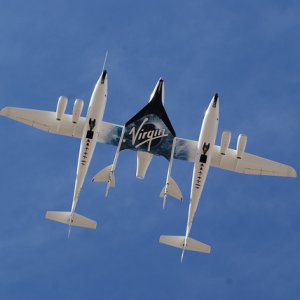Innovation Focused on Reducing Weight, Costs

STORY INLINE POST
Q: How has Innocentro adapted to the changes brought about by the COVID-19 pandemic? How are your priorities evolving?
A: We have been exploring new ways of doing business, such as an opportunity to sanitize airplane cabins and airports. It is going to take a long time to recover from the pandemic, so we have been shifting priorities as we continue to focus on the opportunities presented in California and Baja California.
This year, we had to make sacrifices. While we have had significant business north of the border since the foundation of the company 19 years ago, we had to re-calibrate our operations and redirect our efforts into Mexico, where the door opened for us to become more competitive. Companies now have to work with what they have or disappear because they can no longer put customers or purchase orders on hold.
Q: What are the distinctive features of Baja California that allowed of the aerospace industry to grow?
A: During the pandemic, the aerospace industry was paralyzed in Baja California, but the state remains an attractive destination because of our advantageous location right next to the world’s fourth-biggest economy. Baja California also provides support for local companies through its cluster. We have found several opportunities in areas such as interiors for trains and railways because many believe that people will not travel overseas for a while, so they are betting on their own cities.
Revenue-wise we are doing much better now than a year ago. However, it is uncertain how long this will last because there is no guarantee that vaccines will help international travel and the aerospace industry.
Q: How is Innocentro facing changes in demand following the cancellations and deferrals of aircraft orders?
A: We had zero demand during the first six months of the pandemic and in October 2020, we were approached by Boeing, which penalized us over some payments. These penalizations piled up with taxes and other bills.
But things are starting to look up because we have twice as much demand as before and we are recovering thanks to the sacrifices we made. Sacrifices became important to make ends meet. Many SMEs were used to operating in a certain way and did not change when the industry got worse globally. However, the pandemic is not over. Companies need to plan ahead and prepare in case COVID-19 cases ramp up and they have to stop operations again.
Q: What opportunities do you see in the nearshoring trend that has arisen following the US-China trade war and the COVID-19 pandemic?
A: 2022 will be a record year if there are no more surprises. If companies continue working under the hybrid model, they will continue to innovate and come back to a different world. We will see more competition because companies will try to be the go-to in terms of the customer.
If things worsen again, projects will be canceled again and there will not be any opportunities for nearshoring anytime soon. If the pandemic worsens again, the SMEs that could come out on top are those that learned the first time.
One of the opportunities that could arise is innovation at a lower cost as people want to avoid high expenses. On the bright side, if all goes well, the time that was lost will be recovered quickly. The question will be if the industry is ready to meet the pent-up demand.
Q: What opportunities do you see in innovation within the aerospace industry?
A: Over the next two years, there will be a need to keep costs down. Innovation will come from companies that agree to the new normal after the pandemic and learn how to survive under constant risk. Customer demand is also going to be restricted because ordering from other countries has become difficult. This is an opportunity that the Mexican market cannot miss in terms of winning more clients.
Q: Innocentro has been in the market for almost 22 years. What changes have helped the industry get to where it is today and what are the next steps?
A: Airlines are innovating their interiors and changing how people interact within cabins. Cabin services will change significantly. The way forward is to become more digital, increasing cash flow and keeping costs down. That will help companies survive the next two years. Many airlines will look for more compact seats and limit cabin service, which will allow them to use less fuel and reduce their costs.
Under those circumstances, those that acquire or develop the lightest trolley or other cabin services and facilities will have an advantage. It is going to be a challenge but that is where the industry is going.
Q: What can the market expect from Innocentro in the coming months or years?
A: We are collaborating with large OEMs and bringing new ideas to the table, such as twin luggage compartments and faster in-flight services. We are making suggestions to OEMs to help reduce weight.
Innocentro is a manufacturing and engineering company with extensive experience in aircraft interior equipment. The company has furnished Mexican airlines and supported OEMs with cabin interior equipment solutions since 2002.








 By Sofía Hanna | Journalist and Industry Analyst -
Fri, 07/09/2021 - 11:10
By Sofía Hanna | Journalist and Industry Analyst -
Fri, 07/09/2021 - 11:10
















